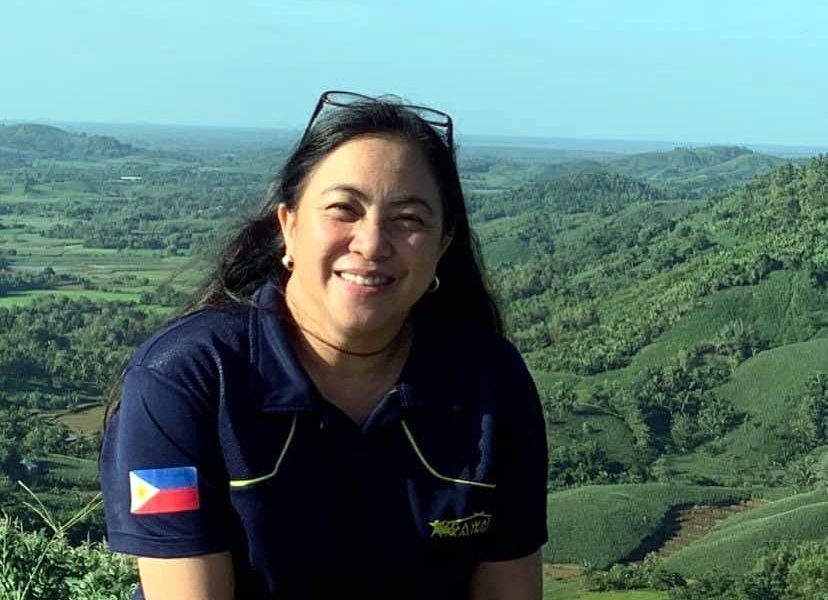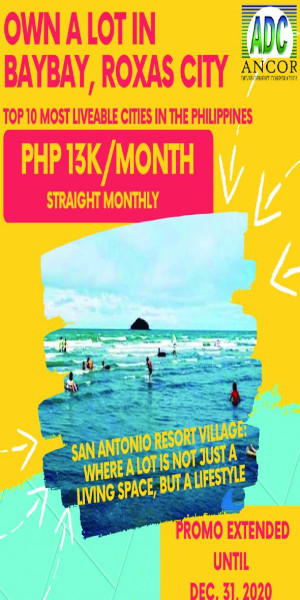
Jessica Veronique Ortiz Yu graduated from the College of the Holy Spirit with a dual degree in Psychology and Marketing. She is the Gawad Kalinga Head for the Province of Capiz, Managing Director of ABOCGO Land, Inc., Board Member of AnCor Corporation and Member of the Board of Trustees of the College of St. John in Roxas City. Mrs. Yu and her husband, Anthony Dexter, are National Chair Couple for Family and Life Apostolate of the Christian Family Movement (CFM).
What led you to work for Gawad Kalinga (GK)
I started volunteering for Gawad Kalinga after a Bayani Challenge in Marinduque in 2007. That experience opened my eyes to the realities our poor experience every day – they are the most deprived of even the basic necessities and they don’t have access to livable land. With any calamity or typhoon, they are the first victims and the last to be served.
After I shared my volunteer experience with my husband and children, we all started to volunteer for GK. I initially served as the Child and Youth Development Coordinator for thirty two GK Communities in Parañaque City and Muntinlupa for five years then became a Bayani Builder (Volunteer Movement) for two years until Capiz was hit by Typhoon Yolanda in 2013. With the help of GK Negros, GK Iloilo and my parents, we mobilized volunteers and conducted a week long relief operation for 6000 hungry families from different barangays and towns all over Capiz. These were barangays in far flung areas. We were guided by the Philippine Army, PNP and the DSWD. As a Capiznon GK volunteer, I was invited to be the GK Head of Capiz to help the government in rebuilding homes and villages and implementing projects to build new communities.
Where are the GK locations in Capiz?
The oldest community in Capiz is the Holy Family GK Village in Milibili with sixty homes. After Typhoon Yolanda, we were able to build seven more GK communities for two hundred twenty families. There’s a GK community in Barangay (Brgy.) Dinginan in Roxas City, Brgy. Buntod and Brgy. Cabugao Oeste in Panay, Brgy. Gabuc in Pontevedra, Brgy. Intampilan in Panitan, Brgy. Concepcion in Dumalag and Brgy. San Nicolas in Tapaz.
How can one apply for a house at a GK village?
To qualify as a GK Kapitbahayan member or homeowner, the applicant must have dependents and married couples must have a joint income of no more than P6000 per month (applicable for Capiz only). They must be willing to live in a community and abide by the GK Kapitbahayan Kasunduan. Applicants are not qualified if they already own a house. Furthermore, they must be committed to do bayanihan work, give sweat equity and be willing to undergo the values formation program of GK. Applicants are evaluated by GK volunteers in their current homes for validation and interview. The goal is for these communities to truly get out of poverty, to be able to run their own governance team and practice shared values in running their own community programs that can make their lives better. In all things, GK Kapitbahayan members and GK volunteers including those in the management team should be guided by the five tenets of GK – “Padugo”, “Una sa Serbisyo, Huli sa Benepisyo”, “Bayanihan”, “Walang Iwanan”, and “Para sa Diyos at Bayan”.
What are some of the issues you’ve encountered while managing the GK villages?
There are so many challenges that can weigh down community building. Values formation has to be repeated time and again. Local politics, biases and prejudices also affect community life. Gossip, drinking and other vices affect the peace and order of every village.
In the area of management team building, we lack volunteers to conduct activities that will engage the outside world and encourage them to care for and share more with the poor. We also need LGUs and government agencies to do more for these communities.
In food self-sufficiency for example, the challenge is not just among Kapitbahayan Members themselves, but also with land donors, tenants and barangay officers.
Are there livelihood projects in these villages?
None that sustained to this day. We are just fortunate that some of the Kapitbahayan members have become more driven, hard working and enterprising. They value trainings and participate in communal efforts. We have university and college partners for livelihood training, simple bookkeeping and organic vegetable gardening. We had some friends who initiated livelihood projects, but none that they were able to sustain through fruition with their community partners. Commitment, time and lack of resources for these projects are usually the main reasons why livelihood projects have not been successfully sustained.
What were you doing prior to your assignment at GK?
I was a young mother of three and ran small businesses from home and a nearby marketplace. My husband and I belonged to a religious community and we both served at our Parish Church. I was not involved in social action or socio and civic organizations or any NGO prior to GK.
How do you juggle your time between Manila and Roxas, family and work?
I am a wife, a mom and a businesswoman in Manila. I am a daughter, a wife, a mom and a businesswoman during those four to five days I spend in Capiz every month.
With my busy schedule, my husband and I are still able to serve our parish and the CFM. Above all, I am able to make time for prayer to commune with God.
I don’t know if one can call that juggling, but doing so many things, one after the other like it’s a never ending process, qualifies for the term. I call myself an “All the Time Volunteer”. Which means all my free time, whether I am in Manila or in Capiz, I give to my Gawad Kalinga Capiz Family. And since I live in Manila, I am blessed to have a supportive family and an amazing local arm – the GK Capiz Provincial Management Team, to help me with this mission.
How do you unwind after work?
To unwind, I love to watch movies. I like eating good food after a hard day’s work. I enjoy doing these with my family and with whoever I happen to be with when I am in Capiz. I am actually easy to please.
What were the fun things you did as a kid growing up in Capiz?
I enjoyed growing up in Capiz. I loved to dance, join in extra curricular activities in school, eat out with my closest friends and hang out in their homes. I loved strolling along Baybay Beach, watching movies with my brothers, eating at Dew Drop Inn, Tatoys or Bornoks on our way to Iloilo to buy school supplies, dining at Jeck’s Lapaz Batchoy with my family, munching on a D&E burger with Ate Auring, watching bangus harvests with Dad early in the morning then feasting on “eat-all-you-can bangus” breakfast with family and friends. So many fun things to do in Capiz while I was growing up. I love Capiz.
Where do you see yourself in the next five to ten years?
In ten years, God willing if I would still be here, I see myself still involved with GK (unless there are no more poor people by then) in any capacity because that is a lifetime commitment, and serving the same religious community with my family. I may also be a grandmother by then and hopefully be well enough to prepare for retirement in Capiz with Dexter.
*****
About the author: Charie Albar is a travel writer and lifestyle blogger. She is the founder of Balay ni Charie Foundation, a grassroots organization that gives school supplies to the children in Capiz. She divides her time between Capiz and California. Check out her blog, travelswithcharie.com.
Conversation with a Capizeño is a series of interviews with Capizeños who are making a difference in their community.






